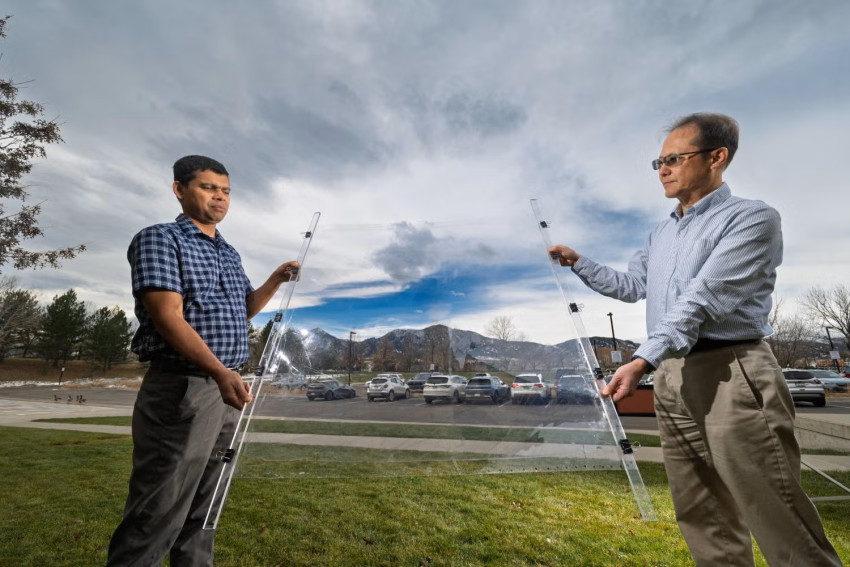
Main concepts of Dutch climate agreement announced
Yesterday the Social Economic Council of the Netherlands (SER) in The Hague announced the main concepts of the Climate Agreement, which must be finished by the end of this year. Chair Ed Nijpels of the Climate Council presented the document to Minister Wiebes of Economic Affairs and Climate. Firm commitments have already been made on a number of subjects, and although the plans need detailing in most areas, the direction is clear.
As is often the case when facing major challenges, the Netherlands has used the consensus-based polder model here. Authorities, companies and interest groups are meeting at five so-called climate tables to try to reach agreements that will result in at least a 49% reduction in CO2 emissions by 2030. Optimists are even hoping for a 55% reduction. The underlying aim is compliance with the Paris Climate Agreement, in other words a maximum 2-degree temperature increase compared to 1990, and preferably just 1.5 degrees.
The five tables are: Electricity, Built Environment, Industry, Agriculture & Land Use, and Mobility. Below we’ll mention a few of the most striking plans, but we can’t pretend that we have all the details. If you want to read the complete overview of this 'interim status of the Climate Agreement' (in full, 'Proposal for the main outline of the Climate Agreement'), visit the special website that has been set up for this purpose (Dutch).
Electricity
If this table gets its way, the generation of green electricity will show solid growth. The aim is to increase from the 2017 level of 17 TWh to 84 TWh in 2030, mostly (49 TWh) as a result of more off-shore wind farms, but also thanks to an increase in the generation of green electricity on land (35 TWh). The Dutch regions will be given assignments from the national government, and will be able to decide individually how to fulfil these.

Built environment
Chair Diederik Samson noticed plenty of willingness to cooperate at this table. The job at hand is enormous: until around 2050, some 7 million houses and 1 million buildings will have to be insulated and made more sustainable in one way or another. However, lots of the technology required already exists, and companies are ready to get started. Incidentally, the tens of thousands of skilled workers needed to do this work will have to be trained quickly, since at the moment they’re not available on the labour market.
One hot issue when it comes to making homes more sustainable is whether those on lower incomes will be hit disproportionately, which is why this table is proposing reducing costs for households. One way of doing this is by increasing the tax on gas and reducing it on electricity, which will act as an incentive to insulate homes and install sustainable heating.
Another striking fact is that the sector wants to substantially increase the number of buildings heated with geothermal energy: it must grow from 3 PJ now to 50 PJ in 2030, and as much as 200 PJ by 2050.
Industry
This table had the most difficulty in arriving at shared standpoints, but this is hardly surprising according to chair Nijpels, because industry has to deal with international competition. If Dutch companies take more stringent climate-control measures than their competitors abroad, and there are already signs pointing towards this, it could jeopardise their competitive position. That is why companies are asking the government for financial support to make their processes more sustainable.
It is not easy to electrify cows
Major industries are also concentrating on making their processes more efficient, and making better use of waste and electrification. In order to achieve climate targets, it is inevitable that CO2 is temporarily stored underground, or under the sea, as those present hastened to add.
Agriculture & land use
It’s not easy to electrify cows, joked chair Pieter van Geel during the press conference this afternoon. Agriculture must therefore take other measures, such as reducing the emissions of methane (a powerful greenhouse gas) in intensive livestock farming, capturing more organic matter in the soil, and capturing CO2 in natural elements like trees.
The greenhouse horticulture sector expects to achieve climate neutrality by 2040, thanks in part to the heating of greenhouses with geothermal energy and the use of CO2 from industry, which will allow crops to grow better.
The population in general is also being asked to do their bit, such as moving away from eating animal protein and consuming more vegetable protein. Finally, food waste must be halved by 2050.
Mobility
In comparison with other countries, the Netherlands is not doing too badly in this area. It’s true that there are lots of electric cars on Dutch roads, but as we move towards 2050, a lot more is needed than a few Teslas, Renault Zoes and Opel Amperas. Buses and freight transport must also be electrified. We have already seen the first exploratory projects (for more, see: ‘Fleet of electric buses around Schiphol' and 'Electric truck from the Netherlands'). Authorities will have to opt for sustainable alternatives when procuring equipment and vehicles.
Electrification of road haulage, shipping and aviation is much more difficult, and biofuels are needed to help reduce CO2 emissions in these areas. Looking somewhat further beyond 2030, hydrogen has a clear role as an energy carrier for electric vehicles.
Quite separate from the way vehicles are powered, there are also lots of opportunities to improve transport logistics in the Netherlands. Half-empty diesel vans blasting through residential areas with a few packages on board are crying out for cooperation in the chain, and logistical optimisation.
Calculations
The next step is for the PBL and CPB planning agencies to calculate whether the proposed plans are feasible. The results will be sent to the government and the House of Representatives. If they approve, the five tables will go back to work to further detail the plans, so that by the end of 2018 all those involved will have committed themselves to the package of measures and agreements that will make up the Climate Agreement.
If you found this article interesting, subscribe for free to our weekly newsletter!
Opening image: Chair Ed Nijpels of the Climate Council, together with his five table chairs, offers the interim report to Minister Wiebes of Economic Affairs and Climate.






